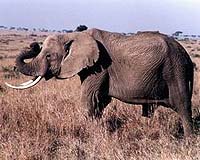| . |  |
. |
Cambridge, Mass. (UPI) Jun 8, 2009 Harvard University scientists have determined some bees brace themselves against wind and turbulence by extending their hind legs while flying. "Wind is a universal part of life for all flying animals," Assistant Professor Stacey Combes said. "Yet we know remarkably little about how animals navigate windy conditions and unpredictable airflows, since most studies of animal flight have taken place in simplified environments, such as in still air or perfect laminar flows." Combes and Robert Dudley of the University of California-Berkeley studied 10 species of wild orchid bees in the Panamanian jungle. The researchers set up air jets and then, using high-speed video, measured the bees' maximum flight speed as they were buffeted by varying levels of turbulence. In every case, the bees displayed a side-to-side rolling motion at high flight speeds, negotiating the turbulence by extending their rear legs while in flight. "This increases the bees' moment of inertia and reduces rolling," Combes said, "much like a spinning ice skater who extends her arms to slow down." Combes said such stabilizing behavior is likely to be seen across Hymenoptera, the order of insects that includes bees, wasps, ants, and sawflies, and that turbulent airflow may decrease the flight performance of many other flying insects as well. The study appears in the Proceedings of the National Academy of Sciences. Share This Article With Planet Earth
Related Links Darwin Today At TerraDaily.com
 5,000 families flee hungry elephants in Mozambique: report
5,000 families flee hungry elephants in Mozambique: reportMaputo (AFP) June 5, 2009 A herd of hungry elephants has forced all 5,000 families in a northern Mozambican village to abandon their homes, state media reported on Friday. The constant incursion of elephants from Quirimbas National Park seeking to food in the fields around the village of Nraha forced the families to relocate to an area with fewer elephants, Noticias newspaper said. The animals also threatened agr ... read more |
|
| The content herein, unless otherwise known to be public domain, are Copyright 1995-2009 - SpaceDaily. AFP and UPI Wire Stories are copyright Agence France-Presse and United Press International. ESA Portal Reports are copyright European Space Agency. All NASA sourced material is public domain. Additional copyrights may apply in whole or part to other bona fide parties. Advertising does not imply endorsement,agreement or approval of any opinions, statements or information provided by SpaceDaily on any Web page published or hosted by SpaceDaily. Privacy Statement |